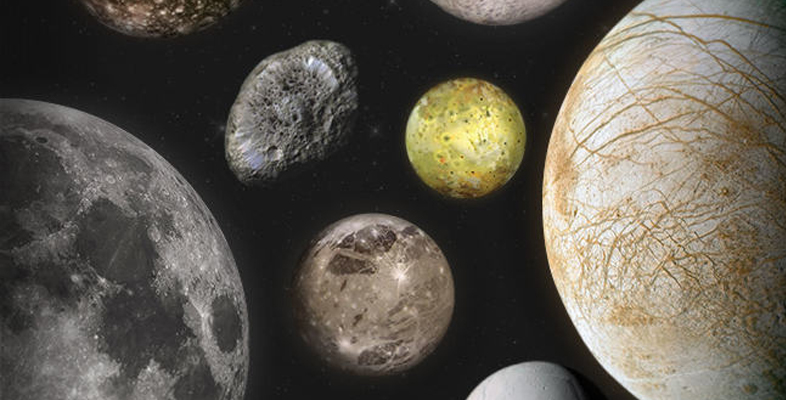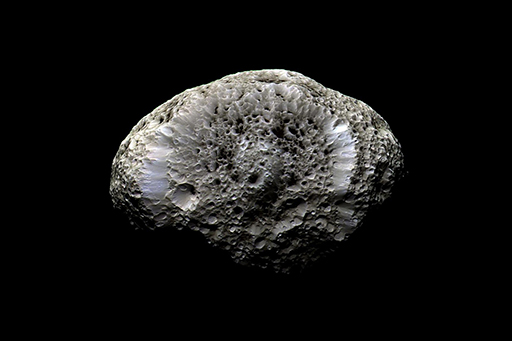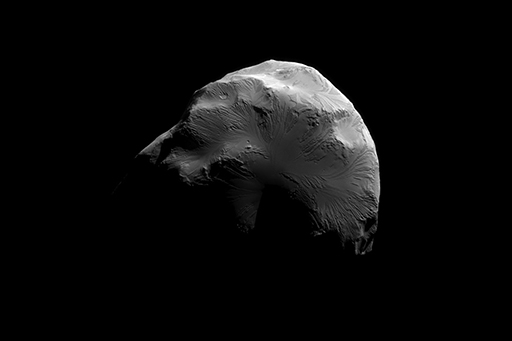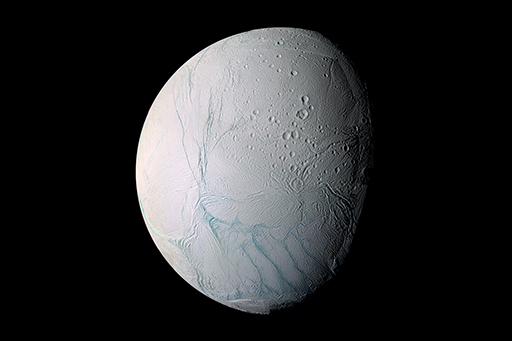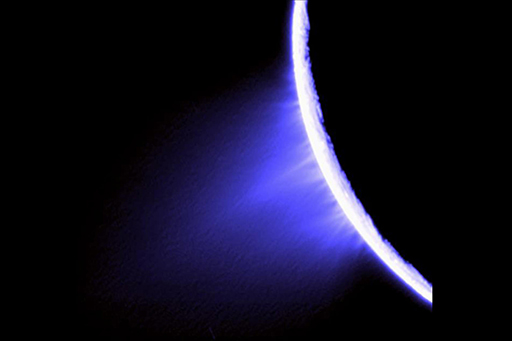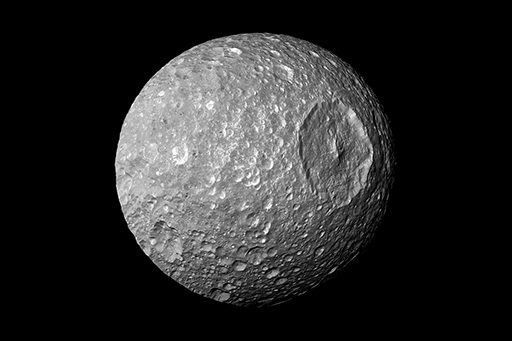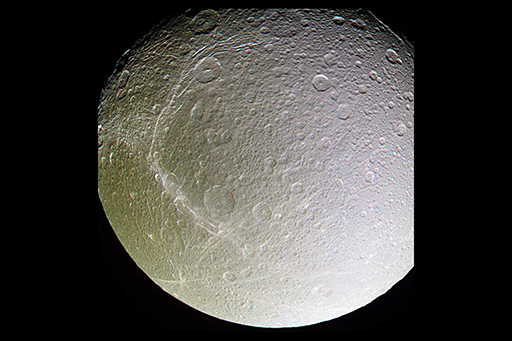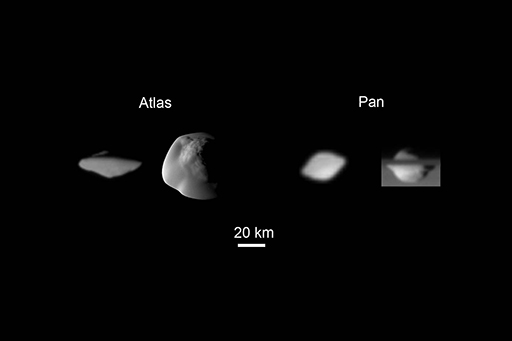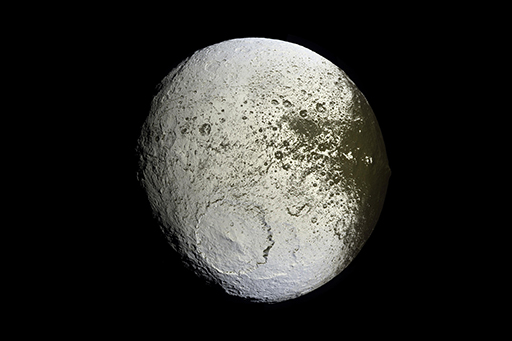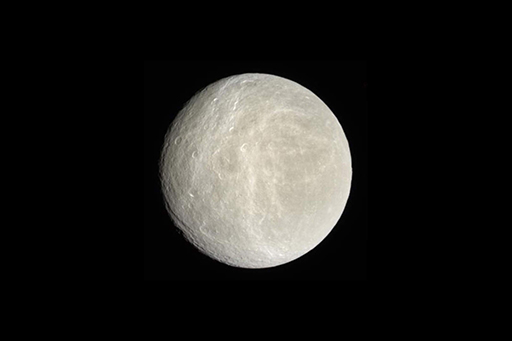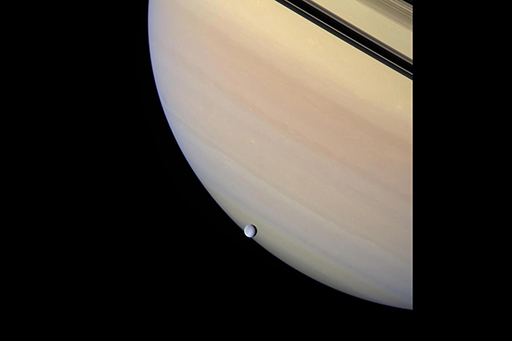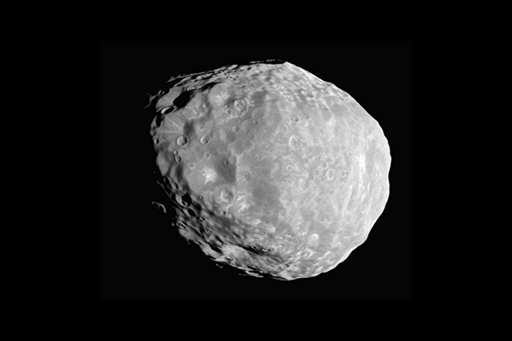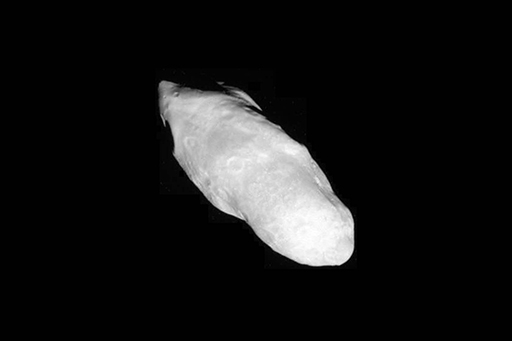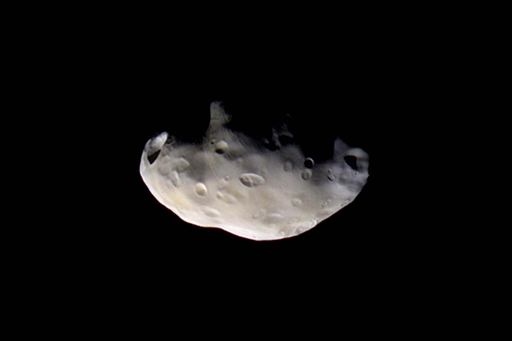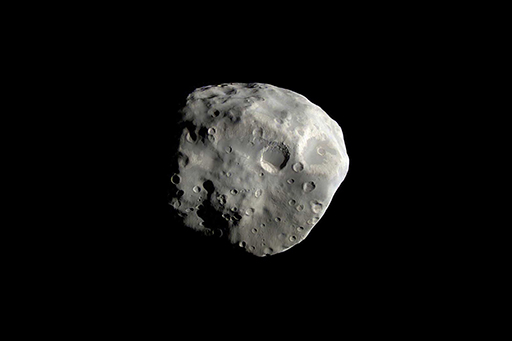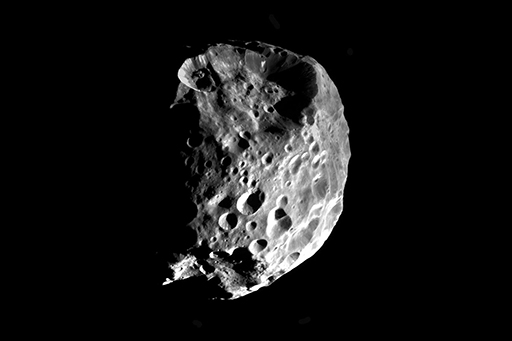3.4 Exploring Saturn’s moons with Cassini–Huygens
The Cassini–Huygens mission was launched in October 1997 as a joint mission between NASA, ESA (the European Space Agency) and ASI (the Italian Space Agency). It reached Saturn in July 2004, where it took the most detailed images to date of Saturn’s small moons. These are all essentially icy bodies. Some of the smaller moons orbiting close to Saturn are known as ‘shepherd moons’ and actually help to stabilise the rings’ edges through their tidal interactions.
Of the 166 moons known to orbit Saturn as of 2023, 63 have been officially named. Inner moonlets close to the primary body are likely to be formed at the same time as the primary or else they turn out to be fragments of larger moons that strayed too close. By contrast, outer irregular moons are more likely to be asteroids captured into orbit. In this image gallery you can view some of Saturn’s larger small moons. As well as overall shape, look out for smoothness, crater types, overall texture, and any surface features such as valleys and grooves.
Hyperion (Figure 44) is 270 km across, and sponge-like in appearance due to the heavy cratering on its porous surface. Hyperion was the first non-round moon to be discovered (which was by telescope in 1848).
Helene (Figure 45) is 32 km in diameter and shares an orbit with Dione. Mysterious runnels can be seen crossing parts of its surface, carved into its regolith by an as yet unknown process.
Figure 46 is Enceladus (diameter 504 km), which was imaged in 2005 by Cassini, is thought to have liquid water under an ice surface, thus making it a candidate in the search for life. Water rather than lava is erupted from ice-volcanoes, and plumes of ice crystals mixed with nitrogen, methane, carbon dioxide and traces of hydrocarbons such as propane and ethane, have been seen being ejected into space.
A narrow crescent view of part of Enceladus, taken looking back towards the Sun. Scattering of the sunlight by particles in the eruption plumes renders the plumes visible (Figure 47).
Mimas (Figure 48) is 396 km in diameter and is the smallest astronomical body known to be spherical in shape because of self-gravitation. Craters on Mimas are named according to IAU rules. In this case, they have used characters from the Arthurian legends (the crater on the lower left is named after King Arthur himself). The only exception to this is Mimas’ largest crater, which is 139 km across and dominates the right-hand half of this view. It is named Herschel, in honour of Sir William Herschel, who discovered both Mimas and Enceladus.
Dione (Figure 49) (diameter 1122 km) was discovered by Giovanni Cassini, along with Tethys, Rhea and Iapetus. Its icy surface features include complex craters and tectonic fractures.
Atlas and Pan (Figure 50) are small inner moonlets. Pan is the closest known moon to Saturn, and Atlas orbits not far beyond. Two views of each are shown. Along with Iapetus, each features a ridge along the equator, discovered during the Cassini mission. Such ridges are thought to be peculiar to Saturn’s system, but it’s not known how they formed.
Iapetus (Figure 51, diameter 1492 km) shows a dramatic contrast, with one low albedo hemisphere and one high albedo hemisphere. The lengthy rotation period of about 79 days means that the dark side absorbs much more heat from the Sun than the bright side, resulting in increased sublimation (vaporisation) of ice on the dark hemisphere. The vapour migrates and tends to condense on the colder bright hemisphere. The high-albedo stuff is pure, clean ice, whereas the low-albedo stuff is probably carbon-rich impurities that have become concentrated at the surface where the ice has sublimed away.
Rhea (Figure 52, diameter 1526 km) has an icy surface that is more heavily cratered than Saturn’s similar moons Dione and Tethys. The wispy lines are actually fractures in the surface, appearing brighter as they expose fresh ice.
Rhea is dwarfed by Saturn, because Saturn’s diameter is nearly 80 times greater. The black diagonal stripes on Saturn are the shadow cast by its rings (Figure 53).
Janus (Figure 54) is one of Saturn’s inner moonlets and is about 200 km wide. It shares its orbit with Epimetheus. It has a low density, so it is presumed to be very porous.
Prometheus (Figure 55) is an elongated inner moonlet and is about 135 km long. Craters and ridges can been seen.
Pandora (Figure 56) is an inner moonlet and is about 80 km wide. It is shepherd to one of the rings.
Epimetheus (Figure 57) is about 116 km wide. A large crater was observed on its southern face, which could be responsible for the flat edge.
Phoebe (Figure 58) is an irregular outer moon of Saturn about 213 km wide and is thought to have been captured from the Kuiper Belt, as it has a retrograde orbit. It was the first moon to be observed at close quarters by the Cassini spacecraft.
See also:
- Best ever view of Daphnis? [Tip: hold Ctrl and click a link to open it in a new tab. (Hide tip)] Here is the best yet view of Daphnis, an 8 km long moon that orbits within one of the gaps in Saturn's rings. This was captured by Cassini on 16 Jan 2017. Note how it's gravity has produced a wave-like disturbance in the ring material.
- Close up of Epimetheus. Epimetheus imaged by Cassini on 30 Jan 2017.
- Another close up of Epimetheus. A February 2017 close up by Cassini. Do the fine, largely parallel, grooves on the surface remind you of any other moons?
- Best ever views of Pan. Superb extra detail on Pan, revealed on images recorded by Cassini 7 March 2017.
